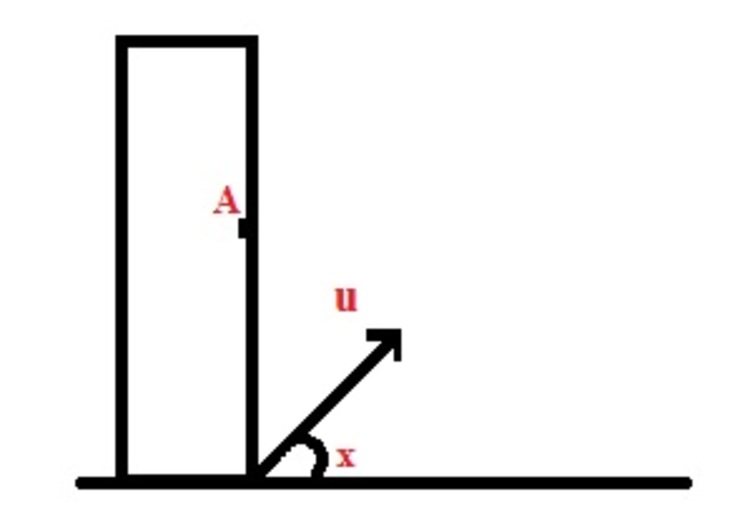Let Shot that shot
 A Balls projected from the of a building with speed u at an angle x from horizontal (see figure). A bullet is fired horizontally from a point A, when the ball is in the horizontal level of the point A. If the bullet hits the ball in air, the time interval between the projection of the ball and the firing of bullet is:
(g-- acceleration due to gravity)
Assume no other forces.
A Balls projected from the of a building with speed u at an angle x from horizontal (see figure). A bullet is fired horizontally from a point A, when the ball is in the horizontal level of the point A. If the bullet hits the ball in air, the time interval between the projection of the ball and the firing of bullet is:
(g-- acceleration due to gravity)
Assume no other forces.
This section requires Javascript.
You are seeing this because something didn't load right. We suggest you, (a) try
refreshing the page, (b) enabling javascript if it is disabled on your browser and,
finally, (c)
loading the
non-javascript version of this page
. We're sorry about the hassle.
Consider just the vertical motion:
When the bullet is fired, the ball could be:
Consider the two objects as dropped simultaneously from elevation of point A. Both will be equally affected by gravitational acceleration (g).
But in case 1 the ball is dropped with some initial velocity (upward or downward) so the bullet can never catch up with it in the vertical direction!
So for the hit, only possibility 2 would work, making elevation of A as the max height attained by the ball
Substitute:
v = 0 at the highest point; u = u sin(x) and a = -g
in equation: v = u + at
to get t = time to reach the max height = u s i n ( x ) / g